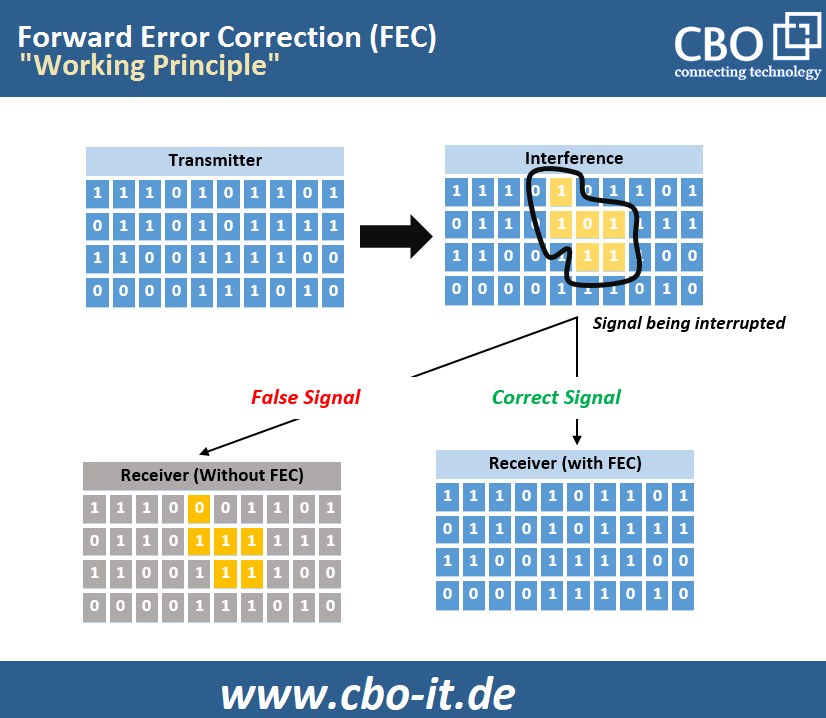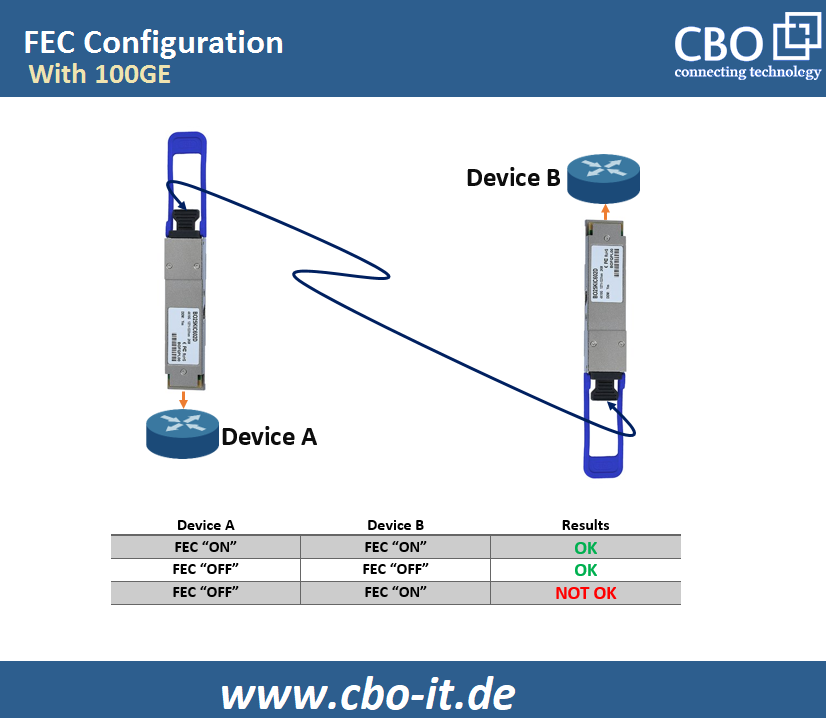Many of us already know about Forward Error Correction (FEC) as it is widely used in the networking and data communication industry. You can find it in space communication, wireless networks, bar code scanners, undersea optical fiber network, and even in your CD players. In this post, we will discuss its crucial role that helps transceivers in achieving longer reaches.

What is FEC?
FEC (Forward Error Correction) is a process in which check bits are being injected into the data stream by a digital data transmitter. The receiver uses the check bit information for the identification and rectification of errors. Afterward, "check bits" are removed and only the required data is converted and relayed in its relevant form such as voice, video, etc. In a system where FEC is utilized, the receiver detects and rectifies errors in real-time during the transmission of data. However, this method of error detection and correction can only be used in digital systems and not in analog communication systems.
Benefits of FEC
- It reduces transmission errors significantly
- Extension of operating range is possible through FEC
- FEC helps in reducing the power consumption
- It improves systems throughput
FEC – Common Applications
FEC is often found in almost every high-volume digital communication system such as remote radio, satellite transmission, cellular telephony, and spread spectrum communications. FEC is recommended in applications where re-transmission request-related delays cannot be tolerated such as control applications and medical telemetry systems.
What is Bit-Error Rate (BER)
Bit Error Rate is defined as the number of errors appearing for a known number of bits. BER indicates the effectiveness of an FEC system. For example, a digital communication system operating with an error rate of 1 bit per 100 before the implementation of FEC may exhibit equivalent performance to 1 bit per 10,000 bits after the deployment of FEC.
FEC Enables 40km Reach
Back in September 2017, Cisco came ahead with a new, long-range optical transceiver (ER4-Lite) in QSFP28 form-factor. The ER4-Lite supports a 40km reach provided that either end`s host platform is capable of encoding and decoding FEC.
This “Lite” version is different than the regular 100GBASE-ER4 transceiver in terms of power consumption and form factor because it can be packaged in QSFP28 form-factor unlike the regular 100G 40km IEEE standardized transceiver which comes in CFP form factor.
The provision of FEC on host platforms is already available on all Cisco routers and switches with QSFP28 ports because it’s a requirement for all IEEE and non-IEEE standards such as the PSM4 MSA and the CWDM4 MSA.

Conclusion
- FEC is an efficient mechanism available for ensuring the integrity of the transmission within a digital communication system
- In optical fiber communication systems, the FEC helps in achieving longer reaches
- Cisco`s 100G QSFP100 “ER4-Lite pluggable optical transceiver utilizes FEC for the deployment of 40km links.
 English
English
 Deutsch
Deutsch
 Espaniol
Espaniol










